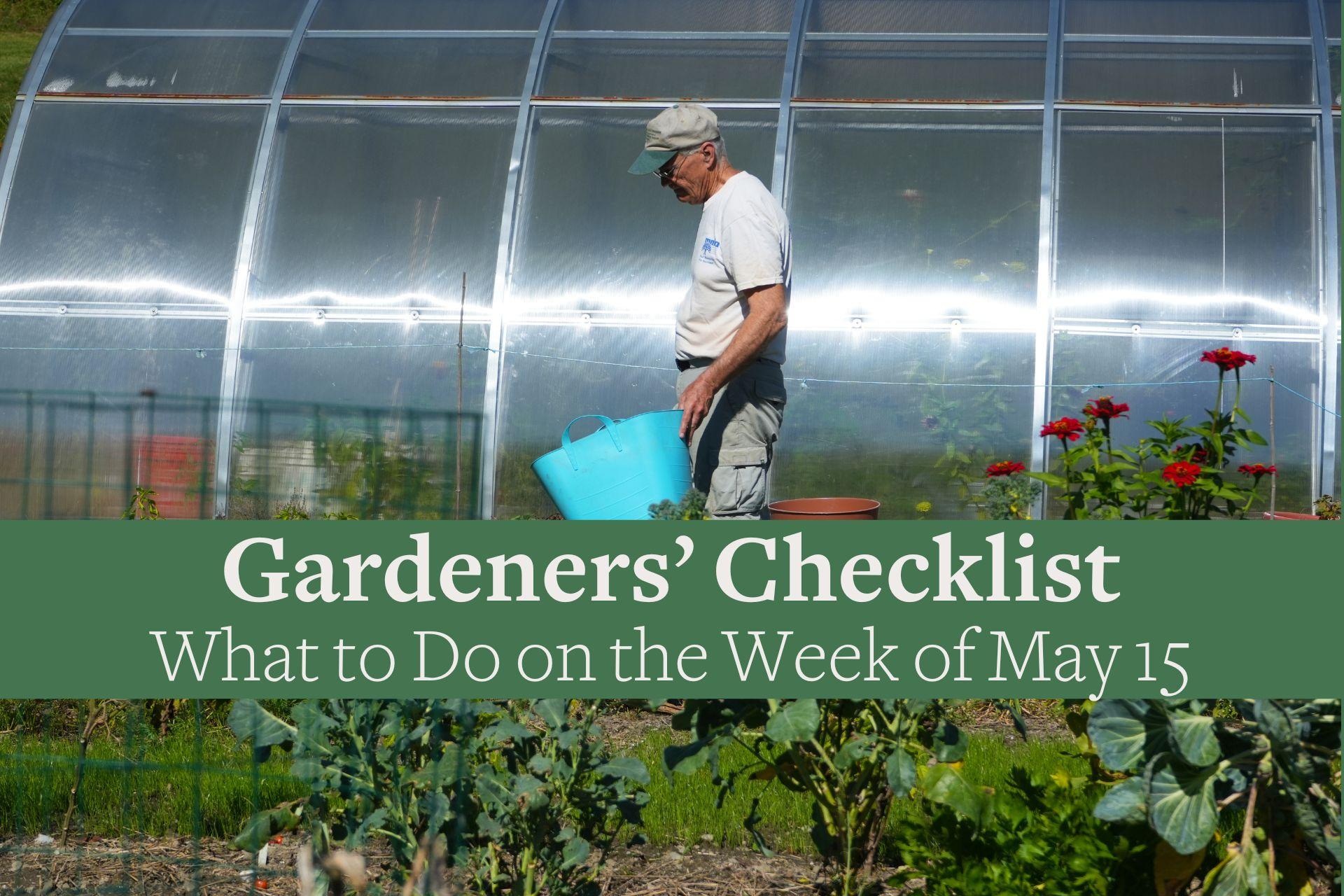You are here
Gardeners Checklist: Here Is What to Do on the Week of May 15
Gardeners Checklist: Here Is What to Do on the Week of May 15
By Ron Kujawski
* Harden flower and vegetable seedlings started indoors before moving them to the garden. Hardening means acclimating transplants to the outdoor environment. This can be done by placing seedlings in a cold frame seven to fourteen days before transplanting. If you don’t have a cold frame, move seedlings outdoors to a partially shaded spot for an hour at first and then gradually increase the duration by an hour each day. Hardened transplants will better withstand high winds, cool or hot temperatures, exposure to sun, and water stress.
* Trim the top edges of peat, cow-dung, or other pots made from organic materials when transplanting seedlings grown in such containers. Otherwise, the exposed top or collar of the pot acts as a wick and draws water away from plant roots. Since some organic pots are slow to decompose in the soil, cut away the bottom of these pots to promote root spread.
* Incorporate some food plants into the landscape. Swiss chard, peppers, eggplant, and herbs can be quite attractive in flower gardens.
* Apply a side-dressing of fertilizer to garlic, and keep the plants well-watered. Such treatment in May and June is critical to the development of large bulbs. The same applies to onions.
* Apply fertilizer to lawns now if none was applied earlier this season. Late May and early September are the two best times to fertilize lawns in this region. Use slow-release or natural organic fertilizers. These will supply a slow but steady supply of nitrogen through summer.
*
What I love most about May is the profusion of flowering trees in natural and managed landscapes. If I had to pick a favorite flowering tree, it’d be the crabapple because of the many variations in size, shape, and flower and fruit color. It wasn’t always a favorite. The crabapples of my youth quickly went from beautiful to ugly as the season progressed. The primary reason was the inevitable appearance of a fungus disease that infected the leaves and fruit. That disease is called apple scab. Initially, it appears as fuzzy brown or olive-green spots on the leaves. Gradually, the leaves turn yellow and drop. By mid-summer, infected trees would be almost leafless. Fortunately, we no longer have to endure such frustration. Most crabapple varieties now sold are resistant to apple scab. This is a great time to plant trees, including crabapples. When shopping for crabapples, be sure it is a resistant variety.
Ron Kujawski began gardening at an early age on his family's onion farm in upstate New York. Although now retired, he spent most of his career teaching at the UMass Extension Service. He serves on Berkshire Botanical Garden’s Horticulture Advisory Committee. His book, Week-by-Week Vegetable Gardener’s Handbook, is available here.
Help Our Garden Grow!
Your donation helps us to educate and inspire visitors of all ages on the art and science of gardening and the preservation of our environment.
All donations are 100 percent tax deductible.



